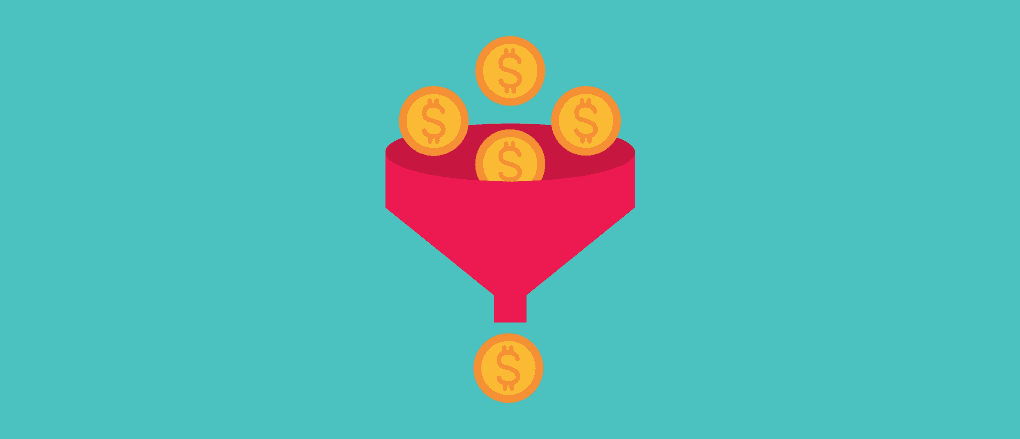May 14, 2024
Learn how to build a high-converting eCommerce funnel with 6 key stages. From awareness to retention, boost online sales with expert strategies.

What is an e-commerce funnel?
The e-commerce funnel covers the customer's journey from discovering your brand to making a purchase and becoming a loyal customer. An e-commerce funnel is carefully optimized to attract, engage, and convert visitors, with the ultimate goal of nurturing them into repeat customers.
An e-commerce funnel is divided into three parts:
The top of the funnel (TOFU), where curiosity is piqued
The middle (MOFU), where interest deepens
The bottom (BOFU), where decisions are made.
These segments are further refined into six crucial stages, each playing a vital role in the customer's journey towards a purchase.
What are the stages of an effective e-commerce funnel?
TOFU
Awareness: This is the first impression you make on a potential customer.
MOFU
Interest: A prospect engages with your content and discovers your offerings.
Consideration: They compare your products with alternatives.
BOFU
Intent: The potential customer demonstrates a clear intention to purchase.
Conversion: The customer completes the transaction.
Retention: A one-time buyer becomes a loyal customer with repeat purchases.
How to Build an e-commerce funnel to increase online sales?
Awareness
Creating awareness depends entirely on how and where you position yourself. For example, an apparel brand spending heavily on LinkedIn marketing would barely get results. However, Instagram marketing might double the growth. The reason? The target audience for apparel brands thrives on Instagram.
Picture your ideal customer. Where do they hang out online? That's where you need to show up! It's all about being where your customers are, speaking their language, and catching their eye. You can achieve this through omnichannel marketing, targeted ads, and even blogs.
Interest
Once you have captured your audience’s attention, nurture them with valuable content. Tools like Thirdi for customer data analysis help you get insights into customer behaviors and patterns.
Use this data to personalize content, hit all their pain points, and showcase how your product or service solves their problem better than anyone else. Nurture leads with detailed product descriptions, customer reviews, and email marketing for consistent interaction.
Consideration
No matter how small the purchase is, we always compare for better options, don’t we? At this stage, leverage this behavior by providing comparisons and case studies to help prospects evaluate your product against competitors.
Highlight the unique selling points (USPs), address potential objections, and display all customer reviews to establish trust and transparency.
Intent
As the customer enters the bottom of the funnel, clear the possibilities of a prospect getting stuck over prices or features. Encourage intent by offering incentives such as discounts, free trials, or limited-time offers. This is crucial since conversion depends entirely on the customer's buying experience.
As of 2024, 70.19% of customers abandon carts due to extra charges, long checkout processes, and slow processing time. Simplify the purchasing process with a user-friendly interface and clear calls to action (CTAs).
Conversion
Having a seamless checkout journey significantly elevates your conversion rates. Offer multiple payment options, provide a clear order summary, avoid hidden charges, and reassure customers with secure payment gateways.
Provide clear shipping information and return policies to ensure trust. Another promising strategy is to implement retargeting ads and abandonment cart recovery emails to win back potential customers.
Retention
The ultimate goal of converting a customer is retaining long-term loyalty. Engage your customers with personalized follow-ups and recommendations, loyalty programs, and excellent customer service.
According to the book Marketing Metrics, there is a 60% to 70% chance that an existing customer will buy from a business again, while there is only a 5% to 20% chance for a new prospect.
Examples of high-converting e-commerce funnels
Seltzer Goods
Seltzer Goods, a beverage company, experienced a significant rise in sales after a well-executed Facebook ad campaign.
Key strategy:
Identified their target audience by analyzing their interests, and behaviors through customer data.
Strategically ran creative ads on Facebook and Instagram for reach and engagement.
A/B tested different ad variations to identify the most effective strategies.
Seltzer acheived a 9.68x return on ad spend (ROAS), a 785% increase in monthly revenue, and a 183% increase in monthly organic traffic.
Stitch Fix
Stitch Fix leverages AI-powered algorithms for personalized styling services.
Key strategy:
Developed an AI system that learns from customer preferences and feedback to provide personalized recommendations
Created a detailed style quiz for new customers
Used AI to optimize inventory management and predict trends
Stitch Fix consistently grew their customer base by 17% year over year to over 3.5 million as of 2020, and had seven consecutive quarters of more than 20% revenue growth.
While e-commerce funnel optimization is simply a 6-step process, it needs precise strategy, creativity, and data-driven insights. Thirdi makes it easier for you by providing actionable insights, helping you make informed decisions and achieve your marketing goals effortlessly.
If you are looking to accelerate your brand growth with marketing, write to us at info@thirdi.ai for a free audit or contact us today.
